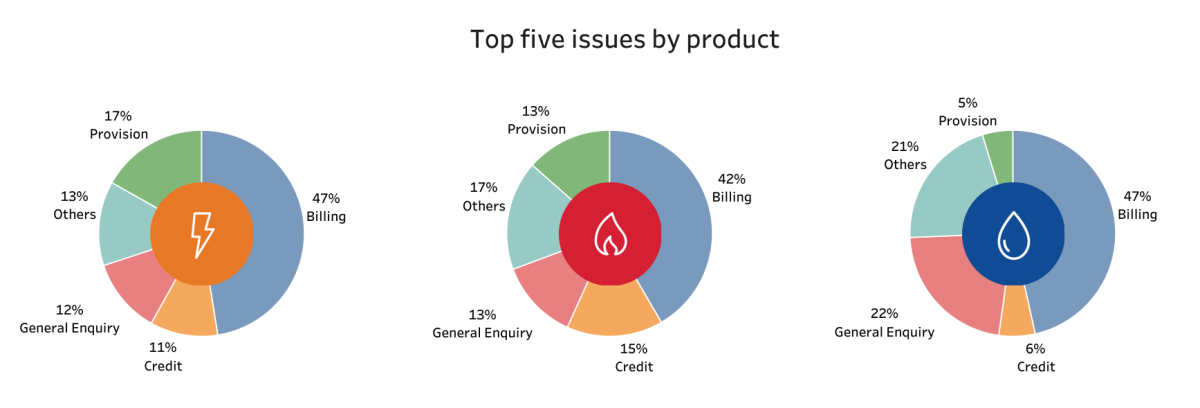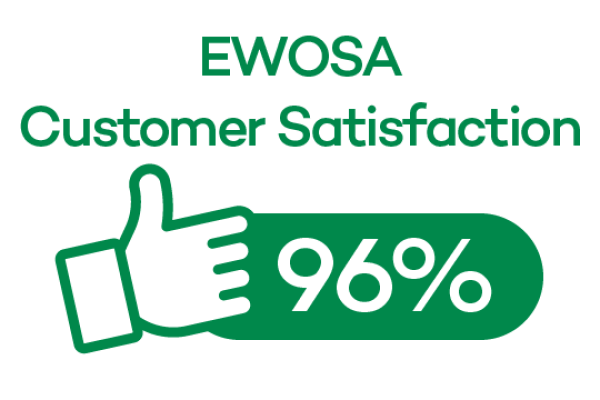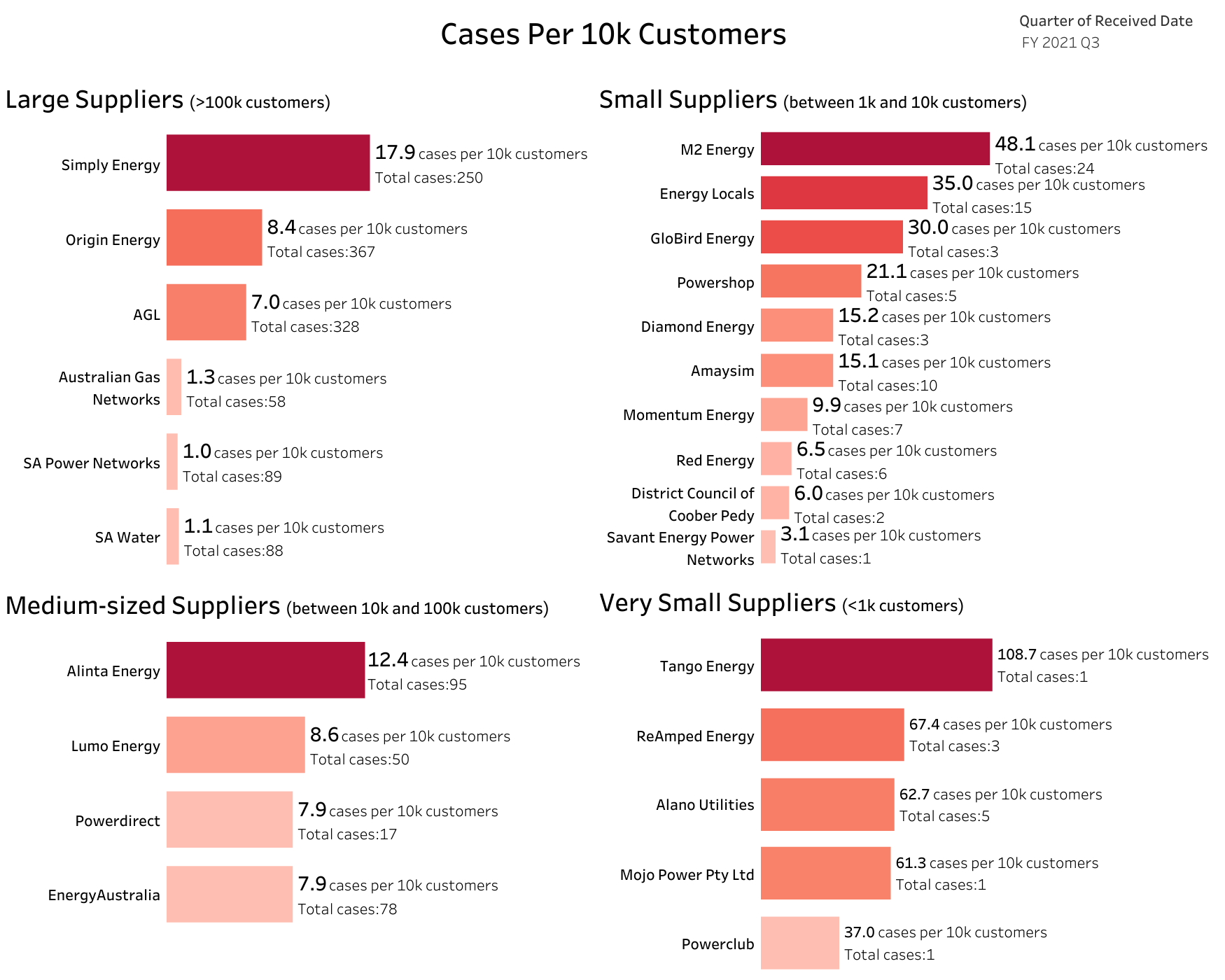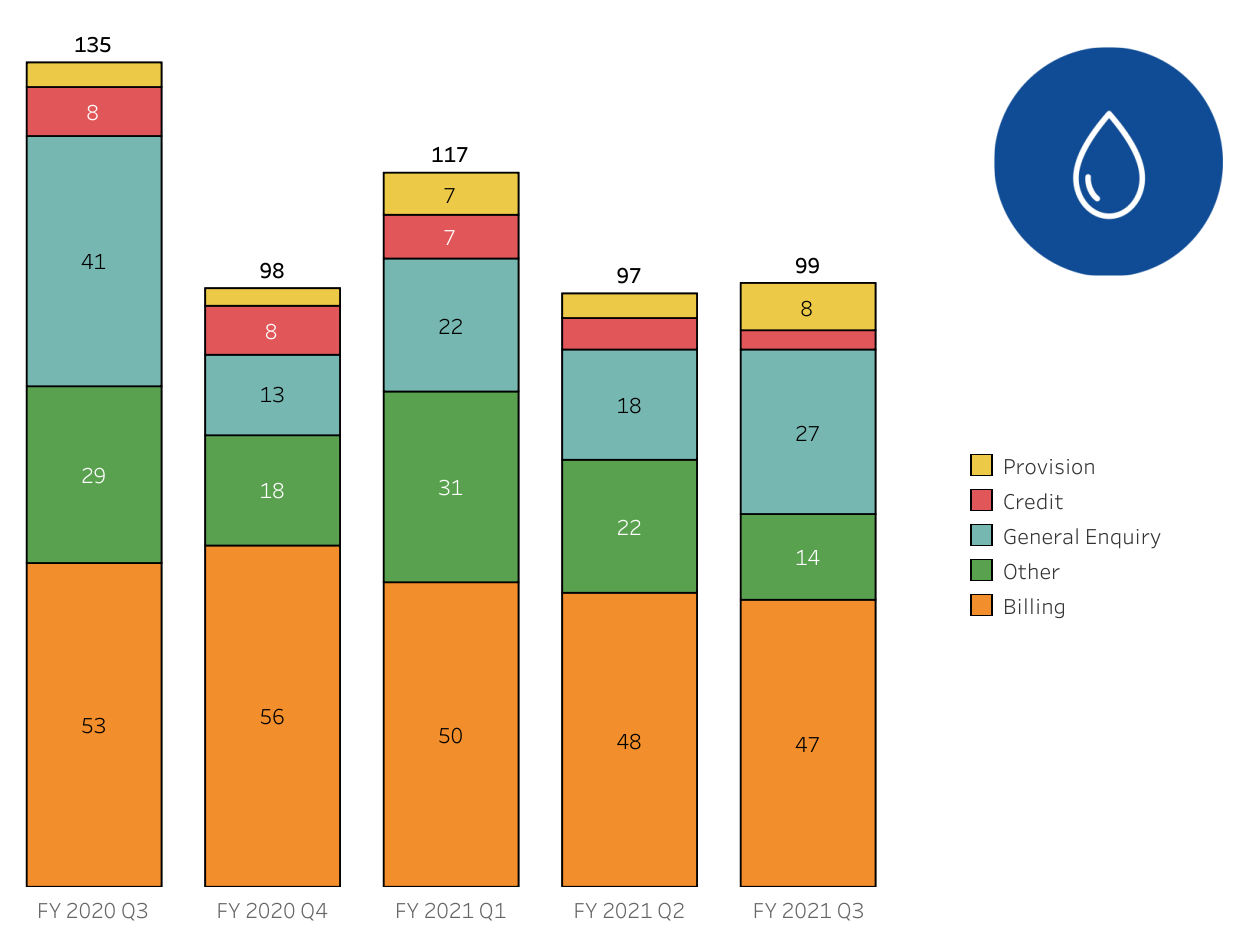EWOSA News - April 2021

- Home
- EWOSA News - April 2021
Welcome to the latest edition of the Energy and Water Ombudsman SA (EWOSA) quarterly newsletter: your one stop shop for emerging consumer trends, hot issues and policy matters.
From the Ombudsman
EWOSA has been pleased to be involved in the Energy Charter’s Better Together project to research the impacts of the pandemic on customers and communities. This collaboration, featuring energy networks and retailers, is delivering vital information about how support can be better targeted to the most vulnerable during 2020-21.
Conducted by Deloitte, the research found that 50% of people agreed that COVID-19 had increased their stress levels, and that there is an upward trend for both those receiving and those potentially needing support. These increases align with the experience in our Scheme, and we will continue to work in connection with all parties to ensure support gets to where it is needed.
Another area where we are seeing extensive collaboration is in relation to home solar and storage. The Australian Energy Market Commission recently released a draft decision on how to integrate more solar into the electricity grid. The package of reforms followed a nine-month ARENA-funded process of stakeholder collaboration, involving consumer representatives, industry associations and energy market bodies. The Scheme welcomes work in this way as we do get up close to all parties in helping to navigate their various concerns on these issues.
This newsletter features a section on recent work to simplify energy bills. The goal is to help consumers manage their energy more efficiently and shop around more easily. The Scheme looks forward to the connection and information sharing that will occur as a new guideline for bills is developed by the Australian Energy Regulator. We trust that the high levels of connection which have recently been occurring will help to facilitate optimal outcomes during this process.
As always, we are here to help. Please contact us on 1800 665 565 or via our website if you need assistance.
Sandy Canale
Energy and Water Ombudsman SA
Consumer Trends 1


Hot Topics
The SA electricity network continues to evolve
We recently saw the South Australian electricity network swing from very high levels of undersupply to very high levels of oversupply in a matter of days. On Friday 12 March, a number of factors, including a fire near Torrens Island Power Station, saw wholesale prices climb to $15,000 per MW hour as the state faced the prospect of a power shortage. Then on Sunday 14 March, 12,000 solar customers and large scale solar connected direct to the energy network had their exports reduced as the state experienced very low demand levels and there was too much energy flowing into the grid.
The Australian Energy Market Operator plays an active role in managing the SA grid. It now has enhanced power to control solar households through the SA Government’s Smarter Homes initiative.
Sources:
Traffic jams on the networks are causing a rethink
The Australian Energy Market Commission (AEMC) is currently considering new arrangements to overcome problems created by blocking power exports from solar and batteries when the grid is under strain. It says that within 10 years, half of all energy users will be using home energy options such as solar – and the “traffic jam problem” will become greater if the current situation remains unchanged.
The AEMC has made a draft decision which includes:
- allowing energy networks to charge energy in two ways (import and export)
- providing incentives to energy networks to deliver enhanced export services that are valued by their customers.
The AEMC is seeking feedback on its draft decision by 13 May this year.
Source:
SA Water will continue to seek the views of its customers
Every four years, the Essential Services Commission of South Australia sets a maximum amount that SA Water can recover from its customers. As part of this process, the views of SA Water’s customers are sought. For the 2024-28 period, the Commission is considering a process whereby customer challenge can be built into the regulatory design, as well as ways in which SA Water can engage early with its customers.
The Commission is interested in seeing how the views of customers can be factored into investment planning and prioritising.
Source:
Enhanced protections for customers during COVID-19
The Australian Energy Regulator (AER) has extended its Statement of Expectations for energy retailers to offer support to customers during COVID-19. The Statement of Expectations relates to hardship, debt, payment plans and disconnections. It can be accessed here.
The AER Chair, Clare Savage, noted the following, however: “These additional protections can’t last forever though and it is likely they will end on 30 June 2021. So we would like to see as many people as possible take the opportunity to transition onto sustainable payment plans or hardship programs before 30 June 2021.”
Source:
Consumer Trends 2


Case Studies
Issues: Billing – Billing Process – Cross Metering
Utility: Electricity
Customer Type: Residential
Case Type: Conciliation
The Issue:
The power was already connected when Ms B moved into a property in September 2019. She then received letters from the supplier asking “the Occupier” to open an account. Ms B called the supplier and was incorrectly advised she would not have to pay the power as the account was not in her name.
Ms B explained that in January 2020 the supplier issued a bill in her name from September 2019, despite the earlier advice. She believed that her attempts to resolve the matter since then had been unsuccessful.
Our Review:
We found Ms B’s supplier had already waived the usage charges from September 2019 to February 2020 and had acknowledged the customer service failings and delay in resolving the complaint.
Resolution:
Ms B’s supplier apologised for the customer service failings and offered a further $172 credit as a gesture of goodwill, which Ms B accepted.
Issues: High Bill Complaint - Leakage Allowance Credit Query
Utility: Water
Customer Type: Residential
Case Type: Conciliation
The Issue:
Mr X received a water bill for use of 485kL, which was much higher than expected. He said that over a decade living at the property his bills were usually for around 10-20 kL for the same quarter. He said his supplier applied a credit for the unexplained high use, but queried whether the credit was correctly calculated.
Our Review:
We reviewed the disputed bill and previous bills and found that the supplier billed the actual reads and actual recorded use. The meter was tested and found to be accurate and all actual reads were in line with and supported the accuracy of earlier reads. Mr X’s supplier had billed the correct actual use. We also verified that the credit for the unexplained high use was correctly calculated in line with the supplier’s policy.
Resolution:
The supplier tested the meter at no cost, applied a $255 goodwill credit for the unexplained high use, and offered an affordable payment plan.
Consumer Trends 3

Customer Corner
Worried about your energy bill? Your retailer can help
Electricity and gas retailers offer a broad range of assistance and can work with you to set up a support plan that suits your situation. There is support available even if you have not missed a bill.
Retailers provide practical advice on how to reduce your energy use and lower your bills and can advise on discounts and government support.
Energy retailers understand that it is a difficult time, so if your circumstances have changed and you are worried about your next electricity or gas bill, talk to your retailer so they can understand your situation. Your retailer’s contact number is at the top of your energy bill.
Source:
Making changes might help lower winter bills
Weather can have a significant impact on energy use and the size of customer bills. Using more lights, clothes dryers and heaters in the short, cold days of winter can result in bill shock post winter.
There are a number of things customers can do to help manage these higher bills:
- contact your retailer and ask to be put on to a payment plan
- shop around for a better deal or ask your retailer if you are on their best deal
- check out optimum temperature ranges for your heating and cooling appliances
- contact the Energy Advisory Service on 1800 671 907 for advice on the most efficient way to manage energy in the home
- there may be circumstances in which a financial counsellor would be helpful to you – if so, contact 1800 007 007.
Simpler energy bills for energy customers
Energy bills will be simpler under new rules designed by the Australian Energy Market Commission. Customers can choose to receive more information digitally, and have easy access to information about energy efficiency.
The rule change proposal was initiated by the Federal Energy Minister, the Hon Angus Taylor MP, and aimed to simplify energy bills so customers can better understand and manage their energy usage and costs, and shop around to find a better deal. A guideline developed by the Australian Energy Regulator to outline the new billing arrangements must be in place by 1 April 2022.
Source:
Public Submissions
Consumer Trends 4

The number of cases per 10,000 customers for each supplier is calculated by dividing the number of cases received during the quarter by the total number of customers for each supplier, multiplied by 10,000. Large Suppliers are those with over 100,000 customers, Medium-sized Suppliers have between 10,000 and 100,000 customers, Small Suppliers have between 1,000 and 10,000 customers and Very Small Suppliers have less than 1,000 customers. The total number of cases is also presented for context.



Remember, we are here to help
EWOSA facilitates the prompt resolution of complaints and disputes between consumers of electricity, gas and water services and Members of the Scheme by providing a service to consumers which is free, independent, accessible, fair and informal.
Freecall 1800 665 565
SMS 0488 854 555